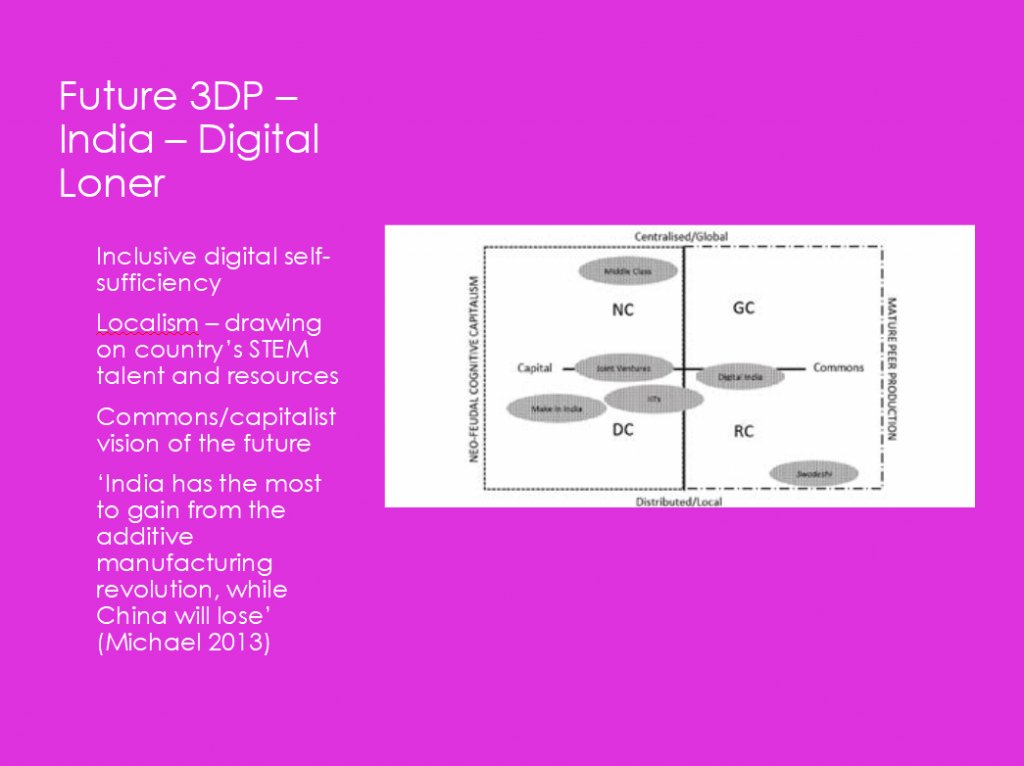The relationship between 3D printing and intellectual property (IP) is the subject of much debate throughout the manufacturing industry.
While at present it would be hugely detrimental to impose and over-enforce IP protection rules on the technology, an open dialogue is still required so future and existing businesses can prepare for its potential impact.
In response, the UK Intellectual Property Office (IPO) has developed an ongoing body of research into “3D printing and intellectual property futures.” Known as the 3DPIP Futures project, the most recent findings were published by the IPO in December 2018.
Ahead of its publication, 3D Printing Industry was invited to the pre-launch event hosted at Clifford Chance headquarters in Canary Wharf. Here, leading legal academics working out of Queensland University of Technology (QUT), Australia, presented an executive summary of the findings, providing key insights into attitudes surrounding 3D printing and IP across China, France, India, Russia, Singapore and the UK. In addition, the authors compiled a list of recommendations to help inform the UK government’s approach to 3D printing and IP.

Data collection
The 3DPIP Futures report was compiled between 2016 and 2018 by four core researchers and two research assistants. Its completion relied on a two pronged doctrinal and empirical approach – the former consisting of a comprehensive lit review, and the latter taking the form of workshops with groups of industry stakeholders.
In each of the six countries considered in the report, between 5 and 15 professionals, from five participating industries (creative, medicine, law, industrial manufacturing and research) were asked questions to determine their perceptions and preconceptions on the role of IP in 3D printing. This included the likes of from the likes of Autodesk, Sculpteo, Renault Group and specialist IP lawyers. The answers given in these focus groups were then used to delineate similarities and differences of opinion among the populations, and form future recommendations by way of policy making, potential legal reform, and business models.
Is 3D printing a threat to IP?
One of the similarities across the 3DPIP Futures focus countries is that many local governments have introduced policies to encourage 3D printing. In China, for example, the government has implemented a National Additive Manufacturing Industry Development Plan, whereas the UK has its own Additive Manufacturing National Strategy.
And, interestingly standardization was signaled as shaping the industry rather than IP, while many groups remarked upon the cross-fertilization of 3D printing with blockchain and automation.
Overall none of the workshops found 3D printing a fundamental threat to IP (or vice-versa) at present, but they all maintained that it was still an important consideration. Through examining the differences between the groups, India in particular was identified as “one to watch” in the 3D printing sphere.

The recommendation of IP and 3D printing for the UK
In total, the report presented five final recommendations to UK government and policy makers. Overall the authors found no pressing need for legal reform at the present time, though they feel some clarification of existing IP laws and 3D printing is required.
For any future consideration of revision to its laws, they say the UK should look to Europe and its “Resolution on 3D Printing.”
Furthermore, identifying the popularization of digital-centric business model, they suggested the creation of “champions” that could help growing companies adopt more flexible business models. As the report states:
“Companies should not be left alone to the task of business model innovation when faced with new forms of digitized technologies such as 3D printing.”
For more detail and recommendations the full 3D Printing and intellectual property futures report can be accessed online via the IPO here. It is co-authored by Thomas Birtchnell, Angela Daly, Thierry Rayna and Ludmila Striukova.
To stay up to date with all the latest legal and regulatory challenges in the industry, subscribe to our newsletter, like us on Facebook and follow 3D Printing Industry on Twitter.
Get your voice heard in the 2019 3D Printing Industry Awards – nominations are open now.
For career opportunities, search 3D Printing Jobs.
Featured image shows the 3D Printing and intellectual property futures executive summary.



